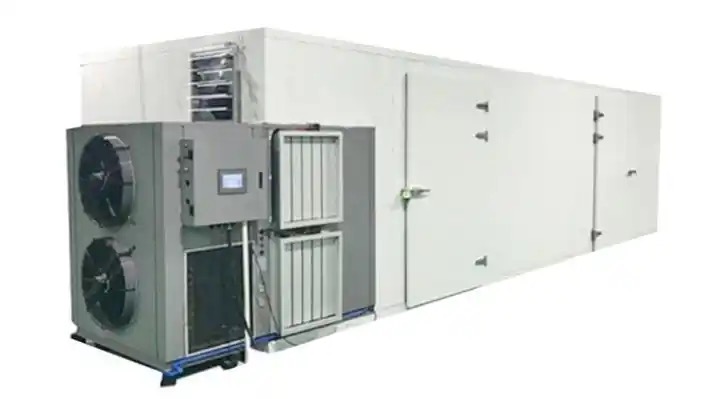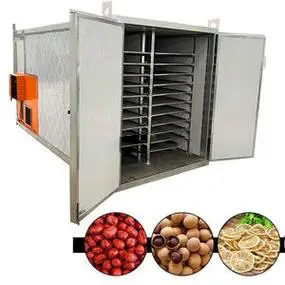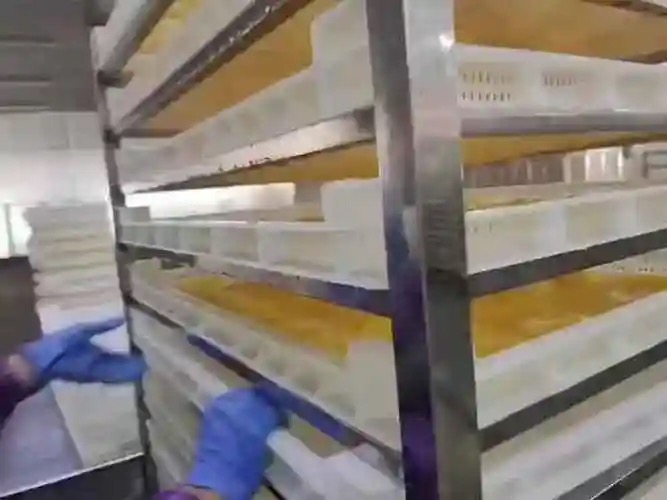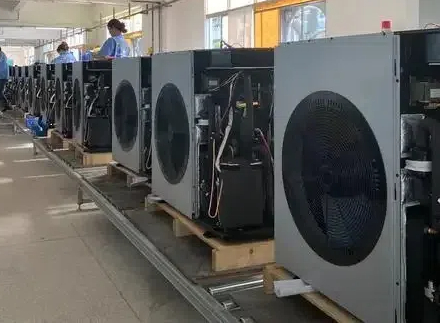
Content Menu
● Understanding the Basics of Food Drying
>> What is a Heat Pump Dryer?
>> What is a Condenser Dryer?
● Performance Comparison: Heat Pump vs. Condenser Dryers
>> 1. Energy Efficiency
>> 2. Temperature Control
>> 3. Drying Time
>> 4. Moisture Removal Efficiency
>> 5. Impact on Food Quality
>> 6. Environmental Impact
● Applications of Heat Pump and Condenser Dryers in Food Processing
>> Heat Pump Dryers
>> Condenser Dryers
● Conclusion
● Frequently Asked Questions
>> 1. What is the main advantage of using a heat pump dryer for food drying?
>> 2. Can condenser dryers be used for drying fruits and vegetables?
>> 3. How does the drying time compare between heat pump and condenser dryers?
>> 4. Are heat pump dryers more expensive than condenser dryers?
>> 5. What types of food are best suited for heat pump drying?
In the world of food processing, drying is a crucial step that significantly affects the quality, shelf life, and flavor of food products. As a manufacturer of food drying machines in China, we understand the importance of selecting the right drying technology. Among the various drying methods available, heat pump dryers and condenser dryers are two popular options. This article will explore how these two types of dryers compare in performance, particularly in the context of food drying.

Understanding the Basics of Food Drying
Food drying is a method of preserving food by removing moisture, which inhibits the growth of bacteria, yeasts, and molds. The drying process can enhance flavors and make food lighter and easier to store. There are several methods of drying food, including air drying, sun drying, and using specialized drying machines. Among these, heat pump and condenser dryers are widely used in commercial food drying applications.
What is a Heat Pump Dryer?
A heat pump dryer is a type of drying machine that uses a refrigeration cycle to remove moisture from food products. It operates by extracting heat from the environment and using it to evaporate moisture from the food. The moisture-laden air is then condensed back into water, which is collected and removed from the system. This process is energy-efficient and allows for precise temperature control, making it ideal for drying sensitive food products.
What is a Condenser Dryer?
A condenser dryer, on the other hand, works by heating air and passing it through the food to evaporate moisture. The warm, moist air is then cooled, causing the moisture to condense into water, which is collected in a tank or drained away. While condenser dryers are effective, they typically operate at higher temperatures than heat pump dryers, which can affect the quality of the dried food.
Performance Comparison: Heat Pump vs. Condenser Dryers
1. Energy Efficiency
One of the most significant advantages of heat pump dryers is their energy efficiency. They use a closed-loop system that recycles heat, resulting in lower energy consumption compared to condenser dryers. This is particularly important for food manufacturers looking to reduce operational costs while maintaining high-quality drying processes. The energy savings can be substantial, especially in large-scale operations where drying is a continuous process.
2. Temperature Control
Heat pump dryers offer superior temperature control, allowing operators to set specific drying temperatures that are optimal for different types of food. This is crucial for preserving the nutritional value and flavor of delicate items such as fruits and vegetables. In contrast, condenser dryers may operate at higher temperatures, which can lead to the degradation of sensitive nutrients and flavors. The ability to maintain lower temperatures also helps in preventing the caramelization of sugars in fruits, which can alter their taste and color.
3. Drying Time
While heat pump dryers are more energy-efficient, they may have longer drying times compared to condenser dryers. This is due to the lower operating temperatures and the time required for the heat pump to extract moisture effectively. However, the longer drying time can be offset by the improved quality of the final product, making heat pump dryers a preferred choice for high-value food items. Additionally, the drying time can be optimized by adjusting the airflow and humidity levels within the drying chamber.
4. Moisture Removal Efficiency
Both heat pump and condenser dryers are effective at removing moisture from food products. However, heat pump dryers excel in maintaining a consistent drying environment, which can lead to more uniform moisture removal. This is particularly beneficial for bulk drying applications where consistency is key. The ability to control humidity levels also helps in preventing the formation of mold and spoilage during the drying process.
5. Impact on Food Quality
The impact on food quality is a critical factor in the performance comparison. Heat pump dryers operate at lower temperatures, which helps preserve the color, flavor, and nutritional content of the food. In contrast, the higher temperatures of condenser dryers can lead to changes in texture and flavor, making heat pump dryers the better option for high-quality food products. For instance, dried fruits processed in heat pump dryers often retain their vibrant colors and natural sweetness, while those dried in condenser dryers may appear dull and taste overly sweet due to sugar concentration.

6. Environmental Impact
Heat pump dryers are generally more environmentally friendly due to their lower energy consumption and reduced greenhouse gas emissions. As sustainability becomes increasingly important in the food industry, choosing energy-efficient drying solutions can enhance a company's reputation and appeal to environmentally conscious consumers. Furthermore, the use of renewable energy sources to power heat pump dryers can further reduce their carbon footprint.
Applications of Heat Pump and Condenser Dryers in Food Processing
Heat Pump Dryers
Heat pump dryers are ideal for a variety of food products, including:
1. Fruits and Vegetables: The gentle drying process preserves the color and nutrients of fruits and vegetables, making them more appealing to consumers. For example, apples and strawberries dried using heat pump technology maintain their bright colors and flavors, making them popular choices for snacks and baking.
2. Herbs and Spices: Heat pump dryers can effectively dry herbs and spices without losing their essential oils and flavors. This is particularly important for culinary applications where the aroma and taste of herbs are crucial.
3. Meat and Fish: The controlled drying environment helps prevent spoilage and maintains the quality of meat and fish products. Heat pump dryers are often used in the production of jerky and dried fish, where texture and flavor are paramount.
Condenser Dryers
Condenser dryers are commonly used for:
1. Grains and Cereals: The faster drying times make condenser dryers suitable for bulk drying of grains and cereals. This is particularly beneficial for manufacturers who need to process large quantities quickly to meet market demand.
2. Snack Foods: Many snack foods benefit from the quick drying process of condenser dryers, which helps maintain their crunchiness. For instance, potato chips and other fried snacks can be dried rapidly to achieve the desired texture.
Conclusion
In conclusion, both heat pump and condenser dryers have their advantages and disadvantages when it comes to food drying. Heat pump dryers are more energy-efficient, provide better temperature control, and preserve food quality, making them an excellent choice for high-value food products. On the other hand, condenser dryers offer faster drying times and are suitable for bulk drying applications. Ultimately, the choice between the two will depend on the specific needs of the food manufacturer and the types of products being dried.

Frequently Asked Questions
1. What is the main advantage of using a heat pump dryer for food drying?
The main advantage is energy efficiency and the ability to maintain lower temperatures, which helps preserve the quality of the food.
2. Can condenser dryers be used for drying fruits and vegetables?
Yes, but they may not preserve the color and nutrients as effectively as heat pump dryers.
3. How does the drying time compare between heat pump and condenser dryers?
Heat pump dryers typically have longer drying times due to lower operating temperatures, while condenser dryers dry faster.
4. Are heat pump dryers more expensive than condenser dryers?
Generally, heat pump dryers have a higher initial cost but can save money in the long run due to lower energy consumption.
5. What types of food are best suited for heat pump drying?
Heat pump dryers are ideal for delicate foods like fruits, vegetables, herbs, and meats, where quality preservation is essential.












